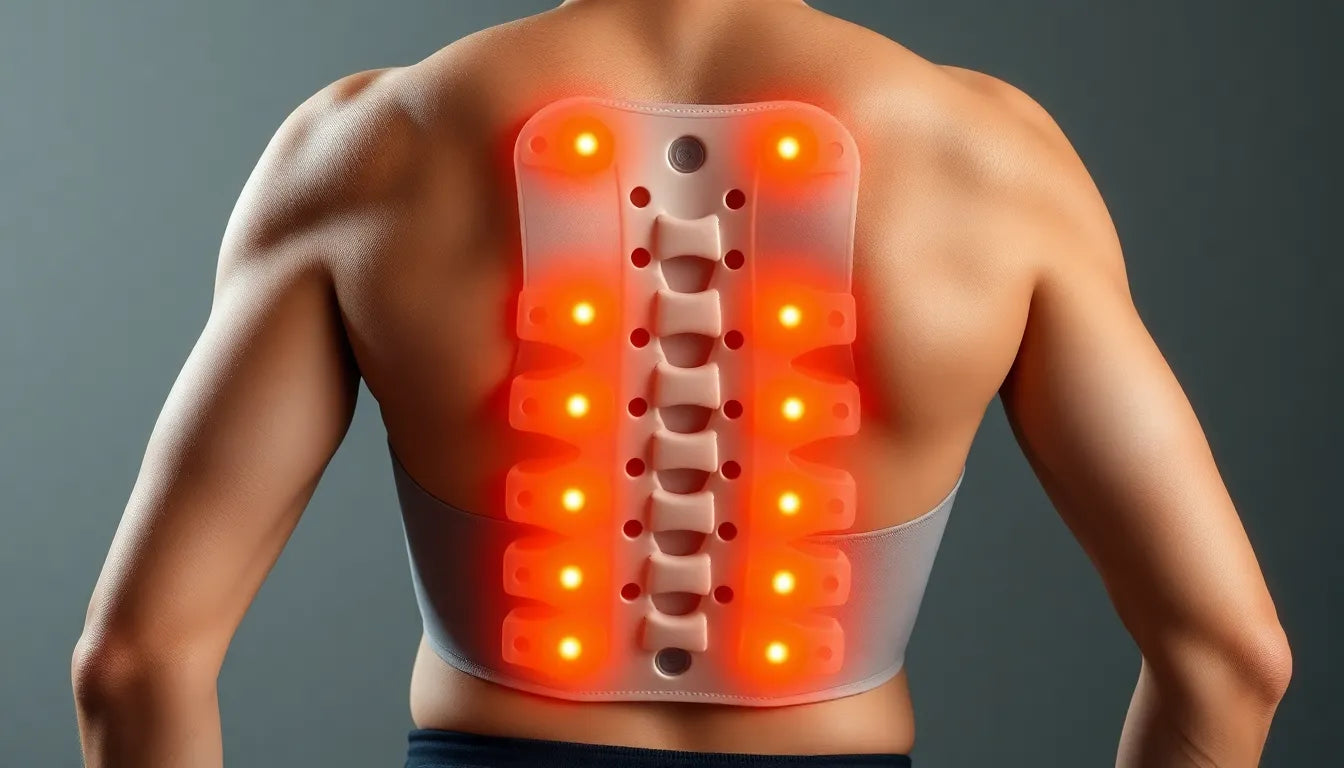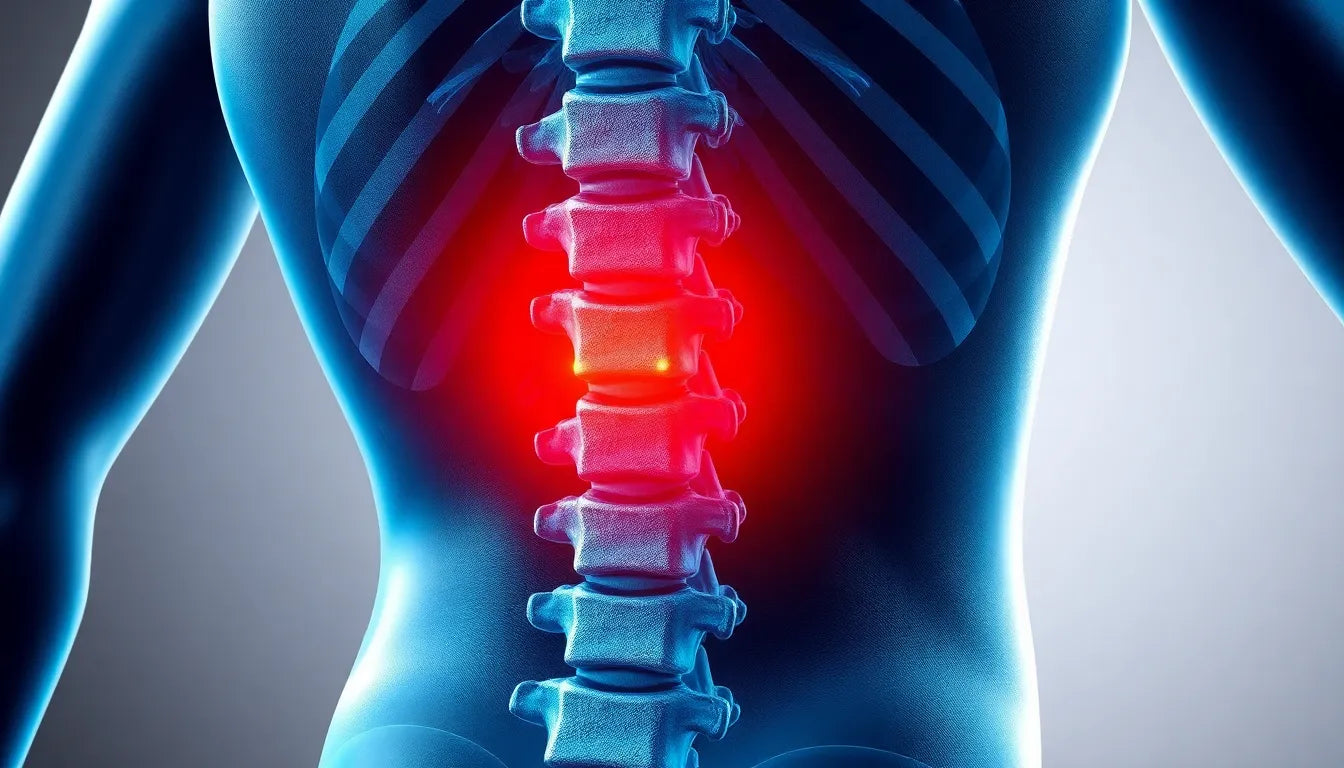Spondylosis, a term that might sound unfamiliar to some, is a common degenerative condition of the spine. Often associated with osteoarthritis, spondylosis can lead to persistent back or neck pain, affecting many individuals as they age. This condition involves the wear and tear of the spinal discs and joints, leading to discomfort and reduced mobility. While it can sound daunting, understanding spondylosis is a crucial step towards effective management and prevention of complications.
Understanding spondylosis and its prevalence
As we grow older, the spine undergoes natural changes. Spondylosis is one such change, characterized by the degeneration of the spine's structures. It is particularly prevalent among older adults, with symptoms and severity varying from person to person. Some may experience mild discomfort, while others could face significant pain and mobility issues. Regardless of the severity, being informed about spondylosis helps in recognizing early signs and seeking appropriate treatment.
Challenges faced by patients
Living with spondylosis presents several challenges. The most common symptoms include chronic pain and stiffness, which can significantly impact one's daily life. Simple tasks such as bending, lifting, or even sitting for extended periods can become difficult. This reduction in mobility can affect the overall quality of life, leading to frustration and a feeling of helplessness. It underscores the importance of finding effective solutions that offer relief and improve functionality.
In addition to physical discomfort, spondylosis can also have psychological effects. The persistent pain and limitations can lead to stress and anxiety, further exacerbating the condition. Therefore, there is a pressing need for innovative approaches that not only address the physical symptoms but also support mental well-being.
The importance of awareness and innovative solutions
Awareness is the first step towards managing spondylosis effectively. By understanding the condition, individuals can take proactive measures to prevent its progression. This involves not just medical interventions but also lifestyle changes and ergonomic adaptations. As the population ages, the demand for innovative solutions to manage spondylosis is increasing. These solutions focus on relieving pain, improving mobility, and enhancing the overall quality of life for those affected.
Through a combination of medical treatments, ergonomic aids, and lifestyle modifications, individuals can find relief and regain control over their lives. As we delve deeper into the topic, we will explore various types of spondylosis, innovative diagnostic tools, and effective management strategies that promise a brighter, pain-free future for those living with this condition.
Exploring the types of spondylosis
Spondylosis is not a one-size-fits-all condition; it manifests in various forms, primarily categorized based on the spine region affected. Understanding these types is crucial for targeted treatment and management. The two most common forms are cervical and lumbar spondylosis, each with distinct characteristics and challenges.
Cervical spondylosis: neck pain and beyond
Cervical spondylosis affects the vertebrae in the neck, leading to chronic neck pain, stiffness, and sometimes nerve compression. This can result in symptoms like headaches, tingling in the arms, and even balance issues. Conservative treatment options are usually the first line of defense. Physical therapy plays a pivotal role, focusing on strengthening neck muscles and improving flexibility. Ergonomic adjustments, such as optimizing workspace setup, can alleviate strain on the neck. Lifestyle changes, including regular exercise and posture correction, are also recommended to manage symptoms and prevent progression.
Lumbar spondylosis: addressing lower back challenges
In contrast, lumbar spondylosis impacts the lower back and is a common cause of chronic low back pain and functional impairment. This type often results in stiffness and difficulty with movements like bending or lifting. Evidence-based treatments emphasize the importance of physical therapy and exercise to maintain mobility and strength. Clinical studies support the use of ergonomic aids, such as lumbar supports and adjustable chairs, to reduce stress on the lower back. These interventions are critical in managing pain and enhancing daily function.
Innovative diagnostic tools in spondylosis management
Advancements in technology have paved the way for more precise and early diagnosis of spondylosis. One such innovation is the use of deep learning systems, which leverage artificial intelligence to improve diagnostic accuracy. Tools like EasiCSDeep utilize surface electromyography (sEMG) signals to analyze muscle activity and detect abnormalities indicative of spondylosis. This technological leap offers significant benefits, allowing healthcare providers to develop tailored treatment plans that address the specific needs of each patient, ultimately improving outcomes and quality of life.
Comparing spinal conditions: spondylosis, spondylolysis, and spondylolisthesis
While spondylosis is a degenerative condition, it's important to distinguish it from other spinal issues such as spondylolysis and spondylolisthesis. Spondylolysis involves a defect or fracture in the vertebral arch, often due to repetitive stress, while spondylolisthesis occurs when a vertebra slips forward over the one below it. Understanding these differences is vital for accurate diagnosis and treatment. Each condition has unique causes, symptoms, and management strategies, which can be summarized in an educational table for quick reference. This comparative analysis aids in ensuring that patients receive the appropriate care and interventions for their specific spinal condition.
By delving deeper into the nuances of spondylosis and related spinal conditions, individuals and healthcare providers can better navigate the complexities of spine health. This comprehensive understanding paves the way for more effective management strategies, ultimately leading to improved quality of life for those affected by these conditions.
Innovative approaches to managing spondylosis
Managing spondylosis effectively requires a multifaceted approach that combines medical treatments with lifestyle modifications. One of the key aspects of this strategy is the integration of ergonomic solutions. Ergonomic aids play a vital role in alleviating pain and promoting proper posture, which is essential for individuals dealing with spondylosis. These products, such as adjustable chairs and lumbar supports, are designed to reduce strain on the spine and enhance comfort during daily activities.
Incorporating ergonomic aids into a comprehensive treatment plan can significantly enhance the outcomes of physical therapy. By providing the necessary support and alignment, these aids help patients maintain correct posture, thereby reducing the risk of further spinal degeneration. Additionally, ergonomic solutions are adaptable to various settings, making them a practical choice for both home and workplace environments.
Lifestyle modifications for spondylosis relief
Beyond ergonomic aids, lifestyle modifications are crucial in managing spondylosis symptoms and preventing their progression. Regular exercise is one of the most effective ways to maintain spinal health. Engaging in low-impact activities such as swimming, walking, or yoga can improve flexibility, strengthen muscles, and enhance overall mobility. These exercises are particularly beneficial for individuals with spondylosis, as they minimize stress on the spine while promoting physical fitness.
Diet also plays a significant role in managing spondylosis. A balanced diet rich in anti-inflammatory foods can help reduce pain and inflammation associated with the condition. Incorporating foods high in omega-3 fatty acids, antioxidants, and essential vitamins can support joint health and improve overall well-being.
Posture correction is another critical component of lifestyle modification. Techniques such as mindful sitting, standing, and movement can prevent unnecessary strain on the spine. Tools like posture braces and ergonomic furniture can aid in maintaining proper alignment, reducing the risk of further spinal issues.
Conclusion: A holistic approach to spondylosis management
Effectively managing spondylosis involves a holistic approach that combines medical interventions, ergonomic solutions, and lifestyle changes. By addressing the physical, functional, and lifestyle aspects of the condition, individuals can achieve significant relief from symptoms and improve their quality of life. Staying informed about emerging treatments and technologies is essential, as ongoing advancements continue to enhance the management of spondylosis.
Frequently asked questions
What is the difference between cervical and lumbar spondylosis?
Cervical spondylosis affects the neck region of the spine, leading to symptoms such as chronic neck pain, stiffness, and potential nerve compression. In contrast, lumbar spondylosis impacts the lower back, causing chronic low back pain, stiffness, and functional impairment. Each type requires tailored treatment approaches to address the specific symptoms and challenges associated with the affected area.
Can spondylosis be cured?
Spondylosis is a degenerative condition that cannot be cured, but it can be effectively managed. The focus is on relieving symptoms, improving mobility, and enhancing the quality of life through a combination of medical treatments, lifestyle modifications, and ergonomic interventions.
How do ergonomic aids help with spondylosis?
Ergonomic aids are designed to reduce strain on the spine and promote proper alignment, which can alleviate pain and improve posture. Products like adjustable chairs, lumbar supports, and ergonomic workstations help distribute weight evenly and minimize stress on the spine, complementing other therapeutic interventions.
What are the risks of untreated spondylosis?
Untreated spondylosis can lead to increased pain, reduced mobility, and potential complications such as nerve damage. It can also exacerbate other spinal conditions, leading to a decline in overall health and quality of life.
Are there any surgical options for spondylosis?
Surgery for spondylosis is typically considered when conservative treatments are ineffective, and symptoms significantly impact daily life. Surgical options may include decompression procedures or spinal fusion, depending on the severity and specific characteristics of the condition. A thorough evaluation by a healthcare professional is necessary to determine the most appropriate course of action.
Sources
- "Lumbar Spondylosis: Clinical Insights." PubMed Central.
- "Cervical Spondylosis." StatPearls via NCBI Bookshelf.
- "Overview of Spondylosis." Spine-health.
- "Cervical Spondylosis: Patient Management." Penn Medicine.
- "Comparison of Spinal Conditions." Physical Therapy First.
- "Diagnostic Advances in Spondylosis." EasiCSDeep Research.
- "Pathology and Progression of Spondylosis." Radiopaedia.


















